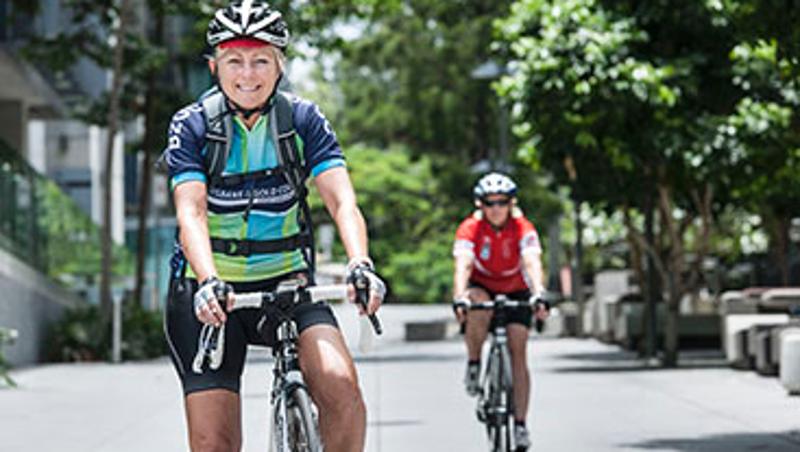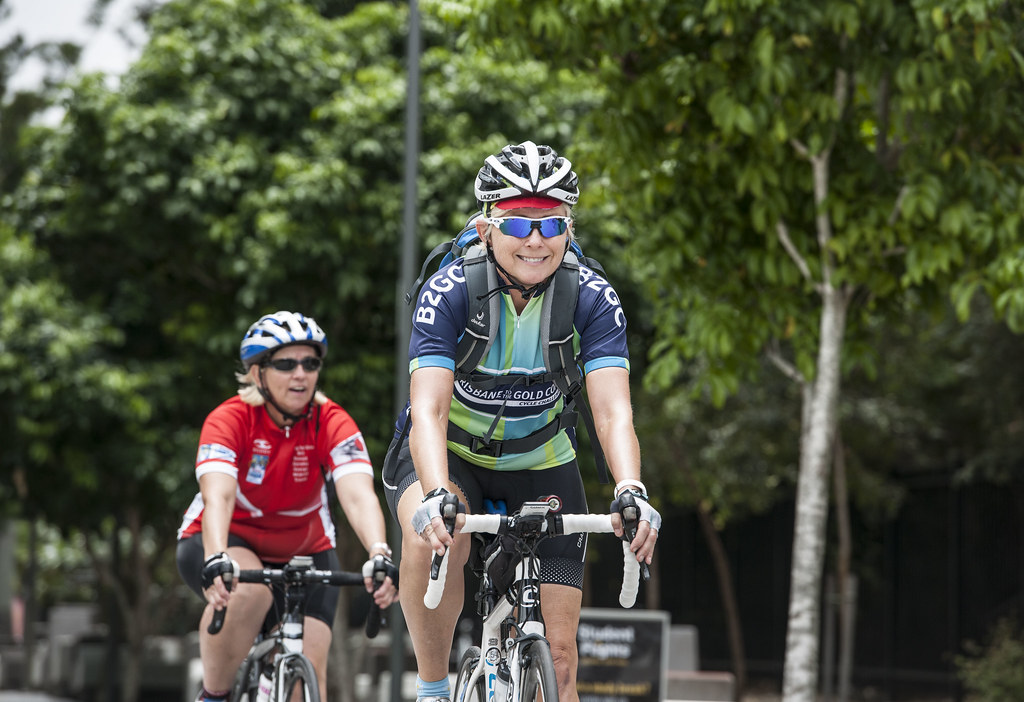
Urban planner Linda Bradby says safer bikeways and more showers and other facilities will help increase the number of female bike riders in Queensland.
Ms Bradby is Planner in Residence with QUT advising research, policy and teaching for future urban environments, and recently appointed member of the Bicycle Queensland management committee.
“Women make up less than 25 per cent of bike riders nationally. While there has been an overall increase in the number of riders, men are taking up the activity at a greater rate than women.
“If more women cycled this could have flow on effects such as reduced emissions, health issues and household expenses,” Ms Bradby said.
In Queensland, there has been a seven per cent drop in female bike riders to 26 per cent according to results of the Super Tuesday Bike Commuter Count in September 2015 by the Bicycle Network.
Ms Bradby said bikeway safety and inadequate end of trip facilities were holding people back from choosing cycling as a viable transport activity outside recreation – such as getting to and from work, school and other activities.
“People feel vulnerable riding a bike on the road with motor vehicles or hidden away on bike paths following remote creek systems and parks,” she said.
“Access to safe and clean end-of-trip facilities like private showers and change rooms would also go a long way to addressing bike riding barriers.
“Design and management of road and bike networks plays a big part in improving practicalities of cycling for all riders, not just the Lycra-clad racers,” she said.
Roadside assist schemes for bike riders like those introduced in some other states could also encourage more people to cycle, according to Ms Bradby.
“A scheme – like an RACQ roadside assist for bike riders – to help people in the event of an accident, mechanical problem or tyre puncture have been successful elsewhere and are encouraged in Queensland to improve participation,” Ms Bradby said.
“I hope to advocate for these and other initiatives through my experience and influence as an urban planner because the ultimately health, environmental and economic advantages benefit us all,” Ms Bradby said.
Traffic congestion in Australia’s major cities accounts for 13 million tonnes of greenhouse gas emissions annually.
According to the Queensland Government, cycling just 10km each way to work reduces emissions by 1500kg per person, helps people achieve the recommended 30 minutes of moderate-intensity physical activity each day, and saves households up to $1700 per year in transport costs.
An urban and regional planner with more than 30 years of experience in Queensland Ms Bradby is QUT Planner in Residence, one of the first roles of its kind in Australia and one which QUT dedicates to meeting social, economic and environmental challenges.
Ms Bradby was integral in developing the first Moreton Bay Regional Council planning scheme, Far North Queensland Regional Plan, Rural regional plans for western Queensland, Great Sandy Marine Park Plan, South East Queensland Coastal Plan and South East Queensland Conservation Strategy.
Media contact: Rose Trapnell, QUT media team leader, 07 3138 2361 or 0407 585 901, rose.trapnell@qut.edu.au or media@qut.edu.au.



